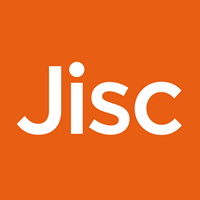The reception of art as a scope of knowledge and learning in the Common National Curriculum Base
Abstract
In this paper we analyze the problem of the reception of the visual arts as a field of knowledge, learning, competences and skills, as it has been formulated in the National Common Curricular Base (specifically for the Fundamental level of Basic Education). In order to do this, the general and structural aspects of the document are first analyzed, to later focus attention on the way in which the teaching of Visual Arts is designed. Special attention is given to the interdisciplinary relationships that are established between educational project, didactic conceptions of art teaching and aesthetic theories of the visual arts. In the final considerations, a general vision of the study is synthesized, specifying the level of importance that the aesthetic and artistic field occupies for the purposes of the National Education project in Brazil. It also determines the way in which the dimension of the reception of art has been established in the curricular structures of Basic Education, at the project level of a Common National Curricular Base. The methodology followed has been qualitative bibliographic research and critical analysis. The results exposed are part of a postdoctoral research, whose object of study is the conceptions of teaching the visual arts in Brazil that focus special attention to the dimension of the reception of art.
Downloads
References
Aguirre, I. (2006). Modelos formativos en educación artística: imaginando nuevas presencias para las artes en educación. Pamplona, ES: Universidad Pública de Navarra.
Barbosa, A. M. (1998). Arte-educação pós-colonialista no Brasil: aprendizagem triangular. In A. M. Barbosa (Ed.), Tópicos utópicos (p. 30-51). Belo Horizonte, MG: C/Arte.
Barbosa, A. M. (2010). A imagem no ensino da arte. São Paulo, SP: Perspectiva.
Bayer, R. (1980). Historia de la estética. Ciudad de México, MX: FCE.
Brasil. (1971). Lei Nº 5.692, de 11 de agosto de 1971. Fixa Diretrizes e Bases para o ensino de 1° e 2º graus, e dá outras providências. Diário Oficial da União, Brasília, DF.
Brasil. (1996). Lei nº 9.394, de 20 de dezembro de 1996. Estabelece as diretrizes e bases da educação nacional. Diário Oficial da União, Brasília, DF.
Brasil. (1997). Parâmetros Curriculares Nacionais: arte. Brasília, DF: MEC/SEF.
Brasil. (1998). Parâmetros Curriculares Nacionais: arte. Brasília, DF: MEC/SEF.
Brasil. (2013). Diretrizes Curriculares Nacionais Gerais da Educação Básica. Brasília, DF: MEC/SEB/Dicei.
Brasil. (2014). Lei nº 13.005, de 25 de junho de 2014, aprova o Plano Nacional de Educação (PNE) e dá outras providências. Diário Oficial da União, Brasília, DF.
Brasil. (2017). Base Nacional Comum Curricular. Educação é a base. Brasília, DF: MEC.
Díaz, H. F. (2019). Intermedialidad artística y enseñanza interdisciplinar. Movimento, (13), 256-280.
Díaz, H. F. (2020). Estudio crítico sobre la investigación empírica de Maria Helena Wagner Rossi. Educação & Realidade, 45(1), e91589. DOI: https://doi.org/10.1590/2175-623691589
Eco, U. (1988). Tratado de semiótica general (4a ed.). Barcelona, ES: Lumen.
Efland, A. D., Freedman, K., & Stuhr, P. (2003). La educación en el arte posmoderno. Barcelona, ES: Paidós.
Eisner, E. W. (1995). Educar la visión artística. Barcelona, ES: Paidós.
Gadamer, H.-G. (1998). Verdad y método I. Salamanca, ES: Sígueme.
Gardner, H. (1994). Educación artística y desarrollo humano. Barcelona, ES: Paidós Ibérica.
Iavelberg, R. (2017). Arte/educação modernista e pós-modernista: fluxos na sala de aula. Porto Alegre, RS: Penso.
Parsons, M. J., & Faria, A. L. (1992). Compreender a arte. Uma abordagem à experiência estética do ponto de vista do desenvolvimento cognitivo. Lisboa, PT: Presença.
Peirce, C. S. (1974). La ciencia de la semiótica. Buenos Aires, AR: Nueva Visión.
Popper, K. (1980). La lógica de la investigación científica (5a reimp.). Madrid, ES: Tecnos.
Revista e-Curriculum. (2014). Dossiê temático: debates em torno da ideia de Bases Curriculares Nacionais. Revista e-Curriculum, 12(3), 1457-2224.
Rossi, M. H. W. (2003). Imagens que falam: leitura da arte na escola. Porto Alegre, RS: Mediação.
Rossi, M. H. W. (2005). A estética no ensino das artes visuais. Educação & Realidade, 30(2), 49-69.
Rossi, M. H. W. (2015). Leitura visual e educação estética de crianças. Revista GEARTE, 2(2), 213-229. DOI: https://doi.org/10.22456/2357-9854.58085
Sampieri, R. H., Collado, C. F., & Lucio, P. B. (2006). Metodología de la investigación (4a ed.). Ciudad de México, MX: McGraw-Hill Interamericana.
Saussure, F. (2006). Curso de lingüística general. São Paulo, SP: Cultrix.
Tatarkiewicz, W. (2001). Historia de seis ideas: arte, belleza, forma, creatividad, mímesis, experiencia estética. Madrid, ES: Tecnos.
Vygotsky, L. S. (1995). Pensamiento y lenguaje. Teoría del desarrollo cultural de las funciones psíquicas. Buenos Aires, ES: Fausto.

This work is licensed under a Creative Commons Attribution 4.0 International License.
DECLARATION OF ORIGINALITY AND COPYRIGHTS
I declare that this article is original and has not been submitted for publication in any other national or international journal, either in part or in its entirety.
The copyright belongs exclusively to the authors. The licensing rights used by the journal are the Creative Commons Attribution 4.0 (CC BY 4.0) license: sharing (copying and distributing the material in any medium or format) and adaptation (remixing, transforming, and building upon the material thus licensed for any purpose, including commercial purposes) are permitted.
It is recommended that you read this link for more information on the subject: providing credits and references correctly, among other crucial details for the proper use of the licensed material.













































